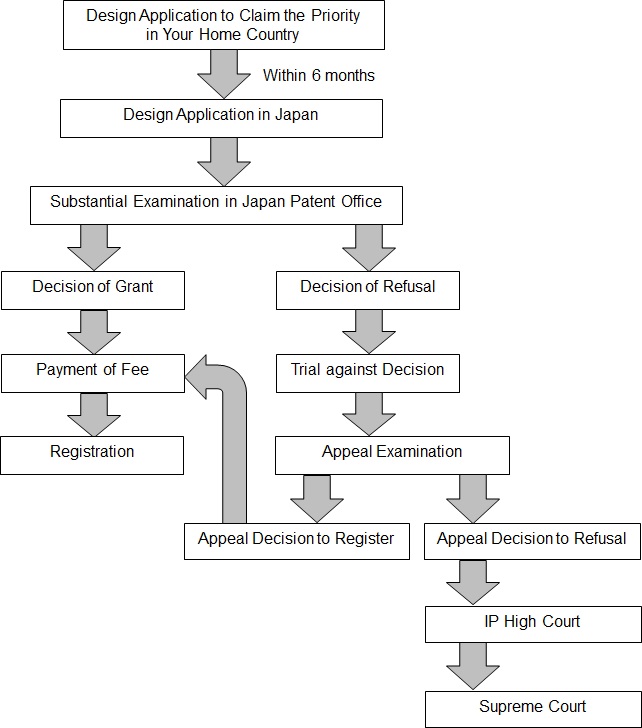- HOME
- FAQs - Design
FAQs - Design
- A unique industrial design, which is characterized by its specific shape as well as arrangement and combination of explicit patterns and colors, may raise functional, aesthetic and commercial values of an article of manufacture.
- The design right is an exclusive right for protecting an original design from the usage of same and very similar designs by third parties. A design applied to an article of manufacture is characterized by the visual, ornamental appearance of the article. Hence, the issues on a design right protection basically rely on shape, patterns or colors, or any combination thereof, of an article.
- In addition, a graphical user interface (GUI) and accompanying icons which appear on a display of an article of manufacture have recently become important elements of visual appearance. The Japanese Design Law now protects the design rights of these.
- If you need to get an industrial design protection in Japan, refer to the following FAQs, which would help you.
Design in Japan: FAQs
Yes you need. Only persons and entities having residential or business addresses in Japan may apply directly (in person) to the JPO for patent, utility model, design, and trademark rights.
When selecting a patent attorney or patent firm in Japan, you may use the following service offered by Japan Patent Attorneys Association (JPAA).
- To obtain a design registration in Japan, an applicant must begin to fill out the forms prescribed in the relevant ordinances (e.g. name and address of each creator, name and address of each applicant, the name of article, drawings and priority information and certificates), and then have to submit those to the Japan Patent Office (JPO) within 6-months from the priority date.

- Once an application is made, a substantial examination will take place. There is no need to to submit a request for examination.
- If the JPO examiner finds no reason for refusal of registration, the examiner issues a decision of grant of the design application. Otherwise, a notice of reasons for refusal will be issued. In this case, the applicant can submit an opinion sheet or amend the contents of the application in response to the notice of reasons for refusal.
- If the examiner determines that the opinion sheet or amendment is acceptable for registration, a registration decision is made. Otherwise, a notice of refusal decision is issued. If the applicant receives a notice of refusal decision, he or she may request an appeal to dispute the examiner's decision.
- The applicant may pay registration fee after the registration decision, so that his or her design is registered.
It’s only \16,000 to the government (JPO) as a design application fee. In Japan there is no system request for examination in design law.
You can search efficiently by using J-PlatPat. If you use it for the first time, please refer to the help page of J-PlatPat. We also recommend to read the Manual of J-PlatPat.
Yes it is valid. The Geneva Act of Hague Agreement concerning the International Registration of Industrial Designs took effect on May 13th of 2015 in Japan.
